In addition to Sunstone's PCB123 (mentioned earlier) there are similar other PCB vendor provided "free" (but PCB vendor tied) layout packages, for instance:
http://expresspcb.com/index.htm
http://bayareacircuits.com/pcb-creator/
http://www.pcb-pool.com/ppus/service_downloads.html
The nice thing about the vendor tied / provided packages is that they somewhat automate the use of the PCB DFM design rules appropriate for that PCB vendor, and generally also facilitate the quoting and ordering process. They also may have relatively useful and hopefully somewhat reliable part libraries which will be useful for a beginner. A lot of the effort involved in creating simple PCBs is finding, perhaps creating, and verifying the parts to be used in the schematic and PCB part libraries. Finding a package that has the parts that you need in a reliable state in the library is a time saving choice. If the package's PCB output file format can be directly imported into the PCB fabrication vendor's system with some level of automated DFM rule enforcement, error checking, and job quoting, that can save you much time configuring design rules, determining export and submission parameters for the manufacturing output files, submitting the design for DFM / quoting / procurement.
One bad thing about tools tied to a particular PCB vendor is that they generally cause you to incur substantially higher costs for the fabrication of the first PCBs than you might otherwise due to the lack of competitive options for PCB procurement if your CAD tool is tied exclusively to their CAM systems. Another bad thing about those vendor locked tools is that they're generally fairly limited in their capabilities compared to general purpose PCB design programs. In ways that can be good to "simplify" the experience for beginners and very casual users, but if you aspire to design frequently or evolve to more complex designs (moderately large PCBs, ones with numerous parts, 4 layer and higher PCBs et. al.) you should learn a good general purpose tool.
KICAD (previously mentioned) is OK. If you like open source tools, I'd suggest it as the best option, though the GEDA / "PCB" project is another option to look at.
EAGLE is OK though the freeware option is fairly limited, but the non commercial license gives a reasonably low cost option to get a more full featured tool. It still has fairly serious limitations compared to higher end "professional" CAD packages but it is evolving, very slowly. The user interface and design flow is fairly byzantine and is not much like the experience you'd find in most other CAD packages. The part libraries are fairly extensive, but also quite complex, difficult to navigate, and sometimes still limited by intrinsic program limitations. There is also (no matter what CAD sytem you use) a question as to whether you can "trust" any vendor supplied or freeware library. Verifying the part whether you designed it or someone else did can take more time than just creating it yourself, with the benefit of creating it yourself that you can do the verification in mostly one step. A few PCB fabrication houses take EAGLE format PCB designs directly or offer EAGLE compatible design rules files which can be handy for a beginner.
Designspark is great in that it is free, there aren't many extremely restrictive artificial design size/complexity/feature limitations that will get in the way of most simple designs, and the UI/design flow is fairly intuitive and is much more similar to most other CAD systems than, say, EAGLE, GEDA/PCB or KICAD. There are still dozens of annoying bugs and disappointing feature omissions that get in the way of even fairly simple design implementations and workflows, but overall I still find it better than most free alternatives. Being able to design PCBs and output standard NC drill and GERBER CAM files for modest size / complexity 2 & 4 layer PCBs is a great advantage of DesignSpark over other free options. You'll be able to take advantage of PCB fabrication services for the hobbyist like OSHPARK, SEEED Studio, BATCHPCB, et. al. to lower your cost of fabricating relevant designs compared to what you'd pay using one of the CAD / CAM vendor locked software + service options. It is also a better "general" design flow to learn to build your skills. The DesignSpark library creation wizard is very useful though still somewhat buggy and limited, it is usually far better than nothing, and that alone is advantageous over many of the alternatives. On the down side, you'll be spending a good hour or two getting to understand and configure the DFM rules in the "technology files" corresponding to vendor capabilities, you'll be spending significant time checking or creating parts, and you'll be going into low level details about gerber & NC drill file format options, semi-automatic generation settings for solder masks & paste layers, and so forth. So the design workflow demands attention to detail at every step, but it gives you powerful tools to do whatever you want. Actually I wouldn't call the management of solder masks & paste layers powerful in Design Spark since you don't have good control of them on a part by part basis, but they're still details you need to consider when outputting manufacturing data.
Another option might be the demo/light version of OrCAD. This will give you a taste of what it is like to use a serious modern (sort of) professional CAD tool, but there are serious limitations as to the design size / complexity it will handle for free. Nevertheless it would be an excellent learning opportunity for a CAD system which has better professional relevance than the hobbyist oriented ones, and its limits are reportedly sufficient for many simple hobbyist designs.
http://www.cadence.com/products/orcad/pages/downloads.aspx

